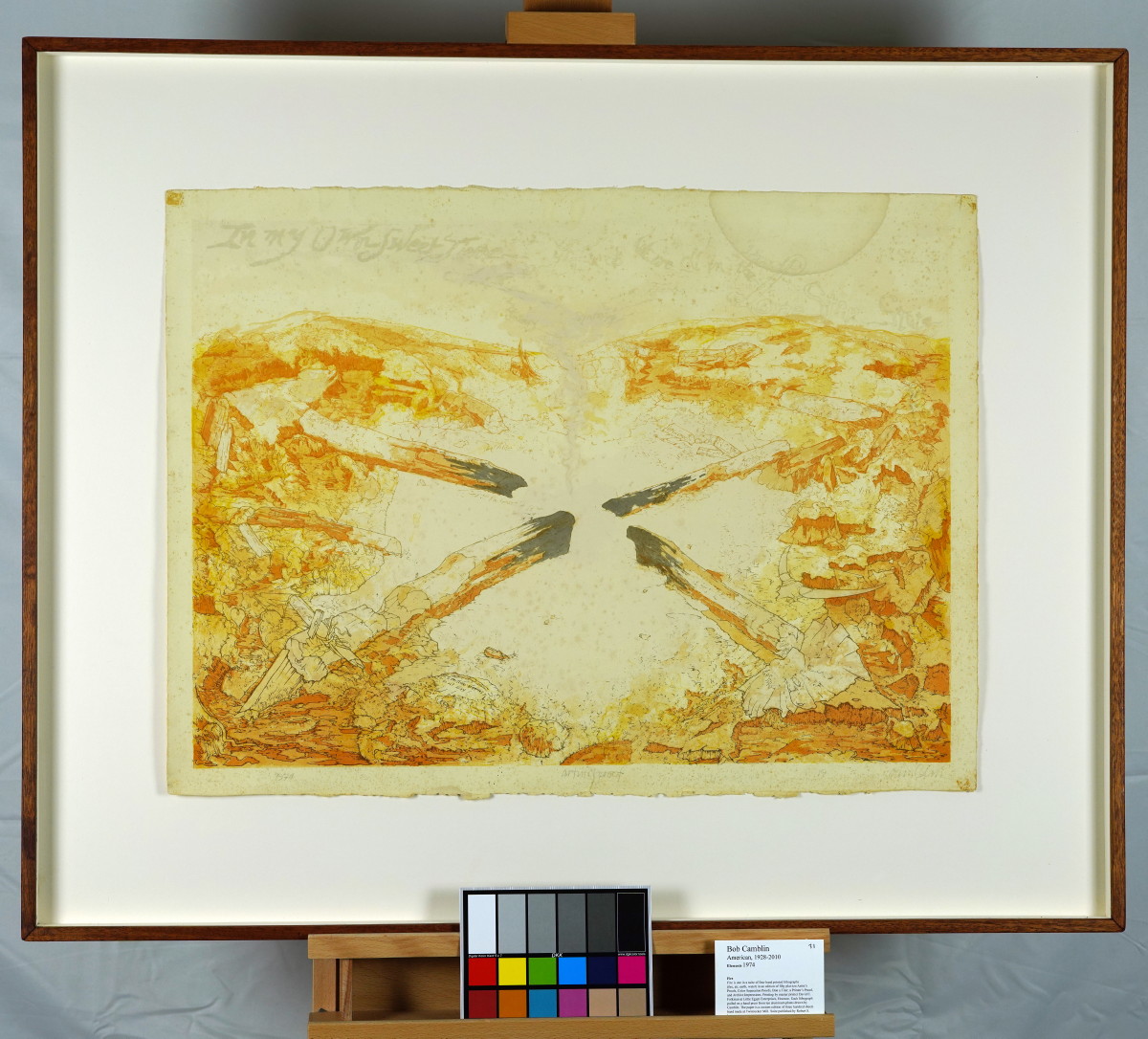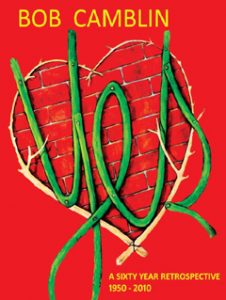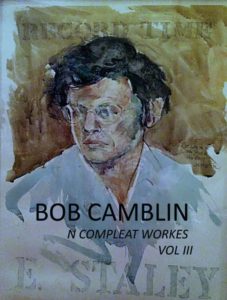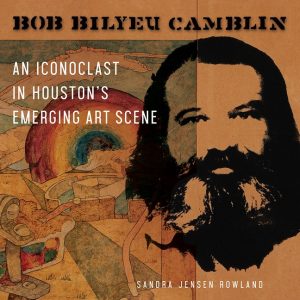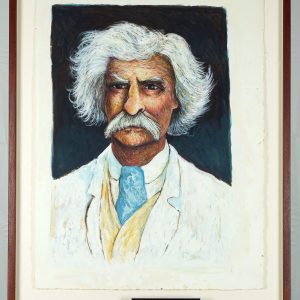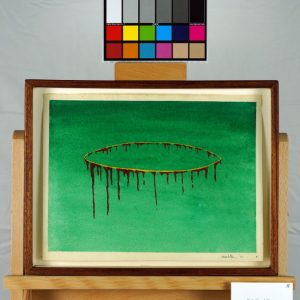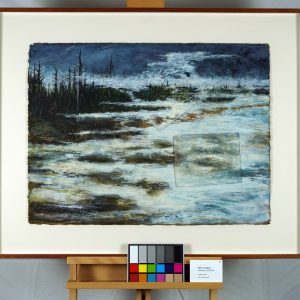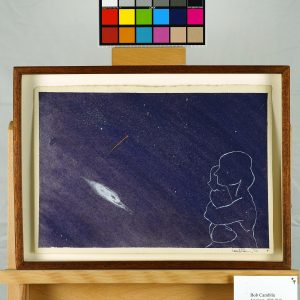Description
Fire, 1974Lithograph on Twinrocker
Signed Artist’s Proof with two printer’s chops (what’s the reason for this?)
Part of The Elements suite
22 x 30in. (image)
32.5 x 40.5 in. (frame)
original, includes certificate of authenticity from ArtTrust
The lithograph “Fire” offers a visual meditation on the impermanence of thought and language. It was printed at Little Egypt Studios as a set and included “Air”, “Earth”, and “Water”. The image depicts a rough, fiery landscape where the colors range from warm earth tones to deep blacks. The central divide is accentuated by shapes that resemble tongues of flame or fissures, suggesting the movement and chaos associated with fire. The background is dominated by pale, almost ashy tones, evoking a sense of dryness and aftermath, while the dark shapes reaching toward the open space appear as if they are charred remnants or embers.
In the Zen context, Fire symbolizes the transformative and destructive aspects of existence. It burns away illusions and attachments, clearing the path for deeper understanding. The central divide can be seen as the line where transformation occurs, inviting contemplation on how destruction can also pave the way for renewal. The scene serves as a reminder of the impermanence of all things—just as fire consumes, it also clears space for new growth, embodying both chaos and clarity.
Relating this to the I Ching, Hexagram 56, “The Wanderer” (Lu), could be connected to the theme of Fire. In this hexagram, fire moves unpredictably, consuming everything in its path, which symbolizes impermanence and the need for adaptability. The painting’s fiery appearance and contrasting shapes reflect the wandering, restless energy of fire. It suggests that transformation is an ongoing process, and moments of conflict or upheaval must be accepted as part of the journey.
Combining Zen and I Ching perspectives, the artwork can be viewed as a meditation on transformation through fire. It suggests a journey of burning away the unnecessary to reveal what is essential. The imagery portrays the dual nature of fire—capable of both destruction and purification. The open space between the dark shapes becomes a metaphorical threshold, where one can move from ignorance to enlightenment, or from chaos to order.
From an art historical perspective, Fire shares visual and thematic elements with movements that explore primal forces and the elements, such as Abstract Expressionism. The raw textures and expressive marks evoke the work of artists like Antoni Tàpies, who frequently engaged with themes of materiality and transformation. The use of burnt and ashen colors aligns with the tradition of using the elemental symbolism of fire to express existential concerns, exploring cycles of destruction and rebirth in nature.
The interpretation of Fire emphasizes its role as a catalyst for change and growth, reflecting both the power and necessity of transformation in life. This piece, as part of a series on the four elements, adds to the broader narrative of how these forces interact and shape the world.
*Shipping cost will vary, please inquire at sales@camblingallery.com before purchasing.
Currently ships from Oregon, USA
Member of artnet? Apply for a discount! Inquire about intergallery and permanent loans for museums.
Fire is one in a suite of four hand printed lithographs (the others in the series are air, earth, water) in an edition of 50 plus 10 Artist’s Proofs, color separation proofs, a bon a tierer, a printer’s proof, and archive impressions. Printed by master printer Dave Folkman at Little Egypt Enterprises in Houston. Each lithograph is pulled on a hand press from 10 aluminum plates drawn by Camblin. The paper is a custom edition of 300 sheets hand made for this edition by Twinrocker Mill. Suite originally published by Robert S. Lowe
“Fire” was featured in his Yes Retrospective, in volume III of the series Bob Camblin N Compleat Workes, and in Sandra Jensen Rowland’s monograph, Bob Bilyeu Camblin – An Iconoclast in Houston’s Emerging Art Scene.
Reproductions of this drawing are available in multiple sizes!
Click here to use our high-resolution viewer!
This artwork is available with a non-fungible token to ensure traceability and transparency of provenance.
The royalty factor – Unlike traditional artworks, such as paintings, mosaics, statues, and the like, NFTs can be programmed to provide royalties to you every time the painting (and token) is sold and resold – for eternity. That mind-bending Camblin you sold could be worth millions one day and provide income for your great-great-great grandkids!
Anti-forgery – The central idea underpinning NFTs is that they are built on the blockchain, which is meant to offer advanced security. Think of it like an un-erasable and un-avoidable copyright.
Easy authentication – Another compelling aspect of NFT art and NFTs in general is the ability to quickly and easily authenticate items, as the record of ownership is scrupulously kept on the blockchain.
